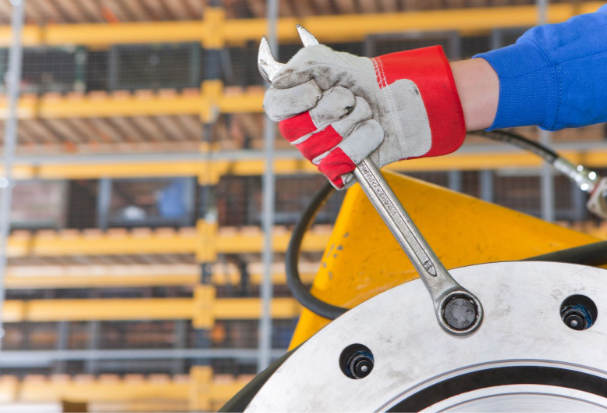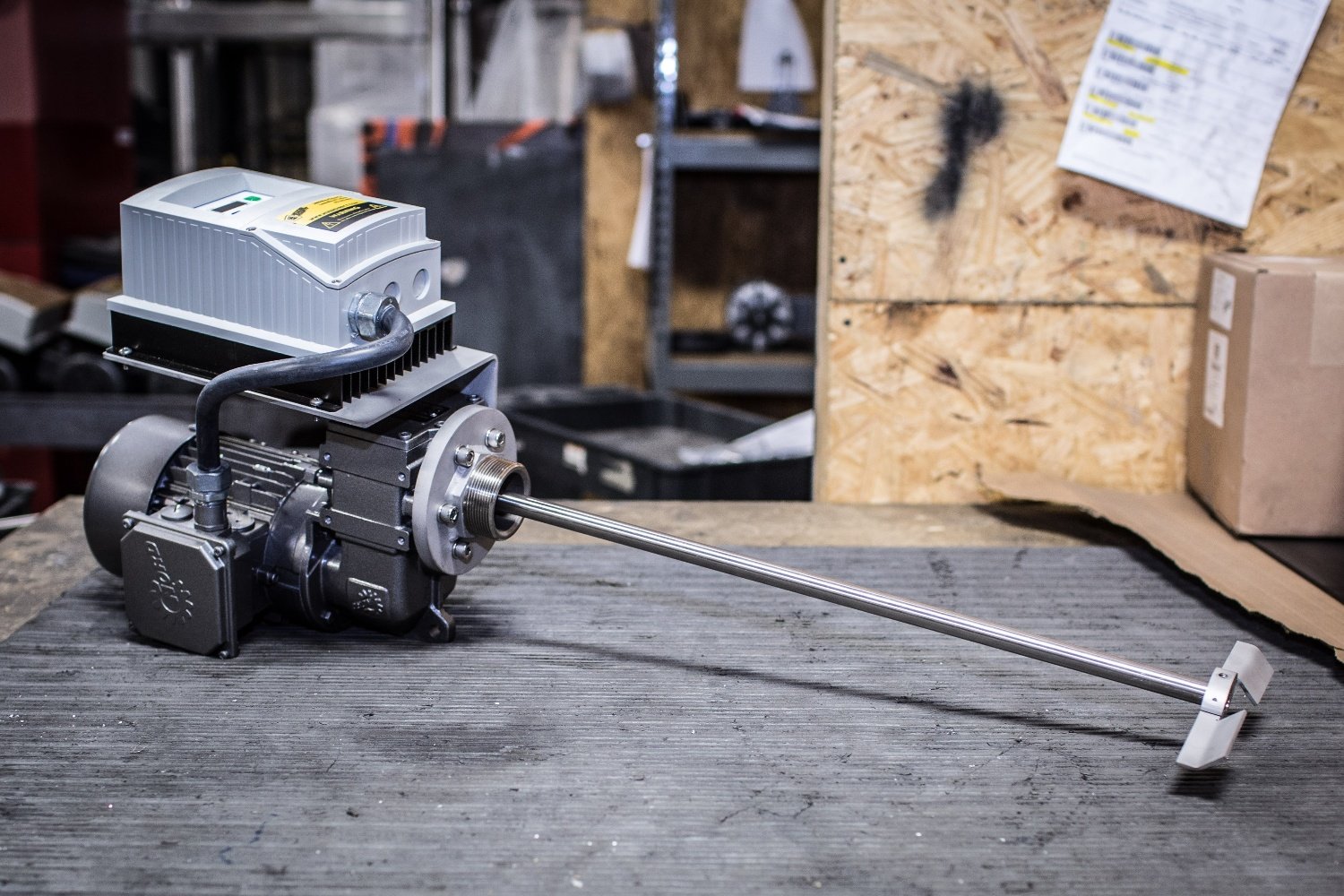Preventative Mixer Maintenance: A Checklist For Industrial Mixer Care
Imagine two cars, both the same make and model, driving down the highway. One car is well-maintained, with regular oil changes, tune-ups, and tire...

Access MXD Process resources including blogs, technical guides, manuals, and maintenance tips—everything you need to optimize, troubleshoot, and expand your process knowledge.
Discover who we are, the industries we serve, and the trusted brands behind our process equipment and environmental solutions. Learn how our team brings precision, innovation, and reliability to every project.
4 min read
MXD Process Jun 11, 2025 1:34:56 PM
Ever wonder how industries keep up with the huge demand for everyday products?
Industrial mixers are a big part of the answer. Whether it’s food, medicine, makeup, or even construction materials, mixers help companies produce large quantities quickly and consistently.
There are two main types you’ll see in action: batch mixers and continuous mixers. Both are built for high-volume production, but they work in different ways, and choosing the right one can make a big difference.
In this article, we’ll compare batch and continuous mixers, highlight where each one shines, and discuss which industries rely on them to keep things moving.
Industrial mixers are important in various industries, from food to chemical processing and pharmaceuticals. These machines are designed to combine materials uniformly, ensuring consistent quality and efficiency.
Whether you’re blending spices, chemicals, or medical powders, the right mixer ensures your product meets industry standards while streamlining production.
Mixing comes down to two main factors for great results:
By focusing on these factors, you can mix like a pro, saving time and resources while getting top-notch results.
To achieve these results, industrial mixers rely on different mechanisms:
Industrial mixers are designed to combine actions like shearing, folding, and dispersing, tailored to the specific application. The two main types, batch mixers and continuous mixers, apply these techniques differently.
Batch mixers are commonly used across industries where precise, controlled mixing is needed. With batch mixing, materials are added to the mixer in set quantities, processed until uniformly blended, and removed before starting the next batch.
Batch mixers offer a range of features that make them ideal for specific production needs. One of the key advantages is their flexibility, allowing for precise adjustments to mix ratios and blending times for each batch. This makes them particularly suitable for small-scale production or facilities that require varied formulations.
Additionally, batch mixers provide custom control, allowing each batch to be tailored for specific applications, which is especially beneficial for multi-product operations. However, their time-dependent process, requiring dedicated time for loading, mixing, and unloading, may slow down production when handling larger batches.
These mixers are widely used across various industries:
Batch mixers are a reliable solution for processes that demand precision and customization.
Continuous mixers, as the name suggests, mix materials in a continuous flow. Ingredients are added at one end of the mixer, uniformly blended as they move through the machine, and the finished product exits simultaneously at the other end.
These mixers are known for their high efficiency, as they operate continuously and significantly reduce downtime between mixes. They also ensure consistent output, providing a steady flow of product with minimal human intervention, and are highly scalable, making them ideal for high-volume production where uniformity is required.
Below are some industries that commonly use continuous mixers:
When deciding between batch and continuous mixers, understanding their differences is important. Each type has unique advantages that align better with specific applications.
|
Feature |
Batch Mixer |
Continuous Mixer |
|
Production Volume |
Ideal for smaller batches and custom mixes. |
Suited for high-volume production. |
|
Customization |
Offers flexibility for tailored mixing. |
Limited to consistent formulations. |
|
Setup Costs |
Typically lower upfront costs. |
Higher initial investment. |
|
Operational Speed |
Slower due to separate loading/unloading steps. |
Faster due to nonstop operation. |
|
Changeover Time |
Allows frequent recipe adjustments. |
Less ideal for frequent product changes. |
|
Industries Example |
Pharmaceuticals, specialty foods. |
Chemicals, construction materials. |
When selecting an industrial mixer, consider the following factors to guide your decision:
How much product do you need to produce in a given timeframe?
If you’re working with high daily output, a continuous mixer may be the better choice. For smaller, custom orders, batch mixers provide greater control.
Does your process prioritize consistent production quality over flexibility?
Continuous mixers excel at delivering uniform results for large-scale operations.
If you’re mixing varied recipes or need frequent formula adjustments, batch mixing allows for this adaptability with ease.
Initial investment and operating costs are crucial. Batch mixers often require lower upfront investment, making them appealing to new facilities.
However, continuous mixers tend to save on operating costs in the long term.
While all mixers ensure homogeneity, some industries prioritize specific attributes.
|
For example: Pharmaceuticals may require precise control in small quantities, while construction demands high-volume consistency. |
If floor space is limited, ensure the chosen mixer fits seamlessly into your layout. Continuous mixers often require a more streamlined setup but can be larger in size.
Consider how often you need to clean or maintain the equipment. Continuous mixers might involve more work upfront but reduce downtime overall through continuous operation.
The ultimate decision between a batch mixer and a continuous mixer comes down to the unique needs of your business. Analyzing factors like production scale, desired flexibility, and budget can make the difference between optimization and unnecessary complexity.
Modern industrial processes demand tools that not only improve efficiency but also integrate seamlessly into growing operations. Whether you lean toward the control of batch mixing or the efficiency of continuous mixing, both options offer strong solutions for informed, scalable production.
Still not sure which option is ideal for your needs? Reach out to one of our experts today. Our team is here to help optimize your processes with the perfect mixing solution.
(Editor's note: This blog was originally published in April 2022 and was updated in June 2025 to reflect the most current information.)

Imagine two cars, both the same make and model, driving down the highway. One car is well-maintained, with regular oil changes, tune-ups, and tire...
Imagine a thriving field where every plant receives just the right amount of nutrients, leading to bountiful harvests.

Portable mixers are a staple for liquid mixing and suspending solids in a host of different industries around the world. These workhorses can be...